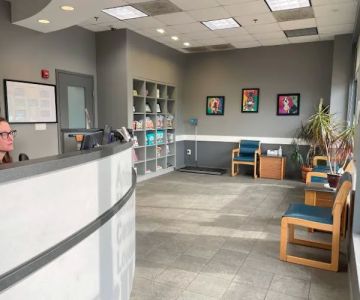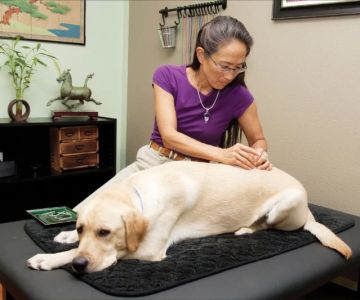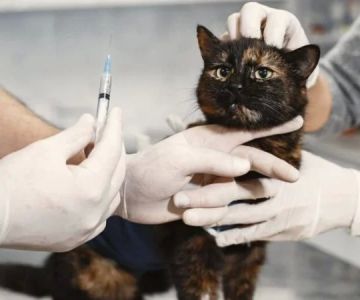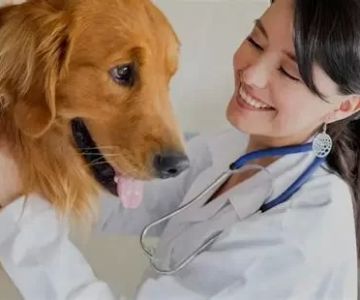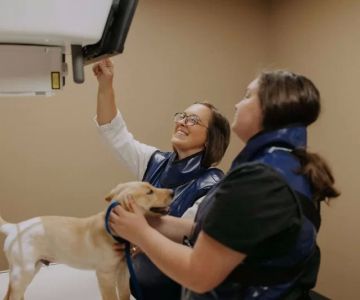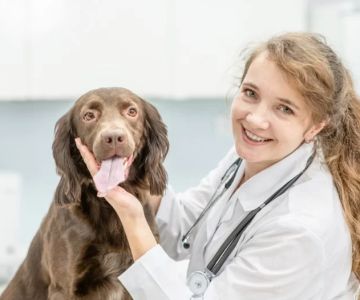1. What Does an Associate Veterinarian Do?
As an animal lover, I’ve always been curious about the behind-the-scenes work of veterinarians. My curiosity led me to explore the role of an associate veterinarian, a position that plays a crucial part in providing healthcare for animals. So, what exactly does an associate veterinarian do? In short, an associate veterinarian is a licensed professional who provides medical care to animals, working alongside a veterinary team to diagnose and treat a variety of animal health conditions. They are typically employed in private practices, animal hospitals, or clinics, providing care across a broad spectrum of species, from household pets to farm animals.
While an associate veterinarian shares many responsibilities with senior veterinarians, they generally work under the guidance of a senior or managing veterinarian. The role can vary depending on the size and type of practice, but generally includes tasks such as conducting examinations, diagnosing illnesses, performing surgeries, administering vaccines, and providing advice to pet owners on care and treatment. Whether in a rural veterinary clinic or a busy urban animal hospital, the associate veterinarian's job is essential to keeping animals healthy and happy.
2. Key Responsibilities of an Associate Veterinarian
As I learned more about the position, I found that the responsibilities of an associate veterinarian are varied and complex. Here are the core duties I discovered that shape their day-to-day work:
2.1 Conducting Examinations and Diagnosing Illnesses
One of the primary tasks of an associate veterinarian is performing routine physical examinations. These exams help identify potential health issues in animals before they become serious. For example, during a checkup, the vet might listen to a dog’s heart, examine its teeth, or check for signs of infection. They also assess overall health by observing an animal’s behavior, eating habits, and physical condition. If any abnormalities are found, the associate veterinarian then moves on to diagnosing the illness, which may involve blood tests, imaging, or other diagnostic procedures.
2.2 Performing Surgeries and Medical Procedures
Associate veterinarians are often responsible for performing surgeries, which could range from routine spaying and neutering to more complex procedures like tumor removal or orthopedic surgeries. While they typically work under the supervision of a senior veterinarian, many associate vets are skilled enough to handle most surgeries on their own. This requires a deep knowledge of animal anatomy, surgical techniques, and post-operative care.
2.3 Administering Treatments and Prescribing Medications
In addition to diagnosing illnesses, associate veterinarians are also responsible for prescribing treatments, medications, or therapies to animals. This might include antibiotics, pain relievers, or even chemotherapy for cancer patients. They monitor the animal’s response to treatment and adjust accordingly, making sure that the animal is on the road to recovery.
2.4 Providing Owner Education and Advice
Part of an associate veterinarian’s role is educating pet owners on how to care for their animals properly. Whether it's about nutrition, vaccination schedules, or behavioral issues, the veterinarian is a key source of advice. Educating owners on preventive care, such as flea prevention or dental care, helps ensure the long-term health of the animals they love.
3. Education and Skills Required to Become an Associate Veterinarian
Becoming an associate veterinarian requires a significant educational commitment. The path to becoming a veterinarian in the U.S. typically includes the following:
3.1 Undergraduate Education
First, aspiring veterinarians must complete a bachelor’s degree in a related field, such as biology, animal science, or pre-veterinary medicine. During this time, students should also gain hands-on experience with animals, whether through internships, volunteering at animal shelters, or working with veterinary practices.
3.2 Veterinary School
After completing an undergraduate degree, students must attend a veterinary school accredited by the American Veterinary Medical Association (AVMA). Veterinary programs generally take four years to complete and include both classroom learning and practical clinical training. This is where students gain the knowledge and skills necessary to diagnose, treat, and care for animals of all kinds.
3.3 Licensing and Certification
Upon graduating from veterinary school, aspiring veterinarians must pass the North American Veterinary Licensing Examination (NAVLE) to become licensed to practice in their state. Some states may have additional requirements or exams. After becoming licensed, many veterinarians choose to pursue further specialization or certification in areas such as surgery, dermatology, or cardiology, although this is not required for an associate veterinarian role.
4. Real-Life Example: A Day in the Life of an Associate Veterinarian
To better understand what an associate veterinarian’s daily work looks like, I spoke with Dr. Jane Foster, an associate veterinarian working in a busy animal hospital in New York. Her day starts early with a team meeting to discuss patient cases and schedule surgeries. She spends most of her day seeing patients—everything from routine checkups for puppies to more critical cases, like emergency surgeries for animals that have ingested something harmful.
“I love the variety,” she told me. “One minute I’m performing a dental cleaning on a cat, and the next I’m preparing for a surgery to remove a foreign object from a dog’s stomach. It keeps things exciting, but it’s also a lot of responsibility. Every day is different, but it’s always about the animals and their well-being.”
Dr. Foster also emphasized the importance of educating pet owners. “I try to make sure every pet owner leaves with the knowledge they need to care for their pet, whether it’s about feeding, training, or dealing with common issues like flea infestations or anxiety.”
5. Career Growth and Opportunities for Associate Veterinarians
The career outlook for associate veterinarians is bright, with opportunities for growth in both private practices and large animal hospitals. Many associate veterinarians go on to take leadership roles in practices, such as becoming managing veterinarians or owning their own clinics. Others may specialize in areas like surgery or emergency care, which opens doors for higher-paying roles and increased responsibilities.
Additionally, continuing education and attending veterinary conferences allow associate veterinarians to stay current with the latest medical advancements, which can further enhance their career prospects and job satisfaction.
6. How Associate Veterinarians Make a Difference in Animal Care
Associate veterinarians play a crucial role in animal healthcare. Through their diagnostic skills, medical expertise, and compassionate care, they improve the lives of countless animals every day. As I learned from Dr. Foster, the best part of the job is knowing that you’re making a real difference in the lives of pets and their owners. “There’s nothing more rewarding than seeing a pet recover from an illness or injury,” she said. “Knowing I played a part in that is why I love what I do.”
Ultimately, associate veterinarians are an essential part of the veterinary team, ensuring that pets live long, healthy lives. They are the frontline workers who provide care, comfort, and advice, making them indispensable to the world of animal health.
For anyone considering a career in veterinary medicine or seeking to understand the importance of an associate veterinarian, this role is both challenging and incredibly rewarding. Whether you are a pet owner looking to understand the work that goes into keeping your furry friends healthy or someone pursuing a career in animal care, the role of an associate veterinarian is critical to maintaining animal health across the country.


